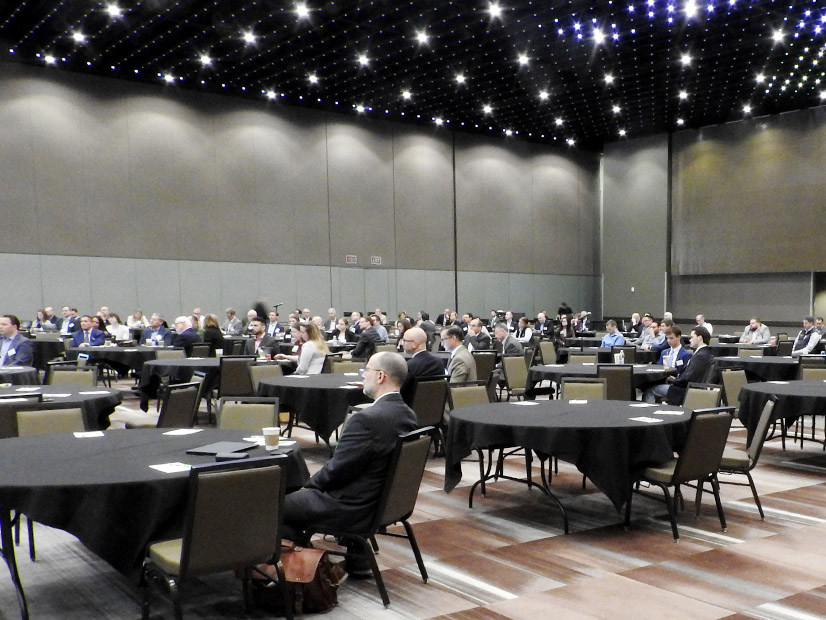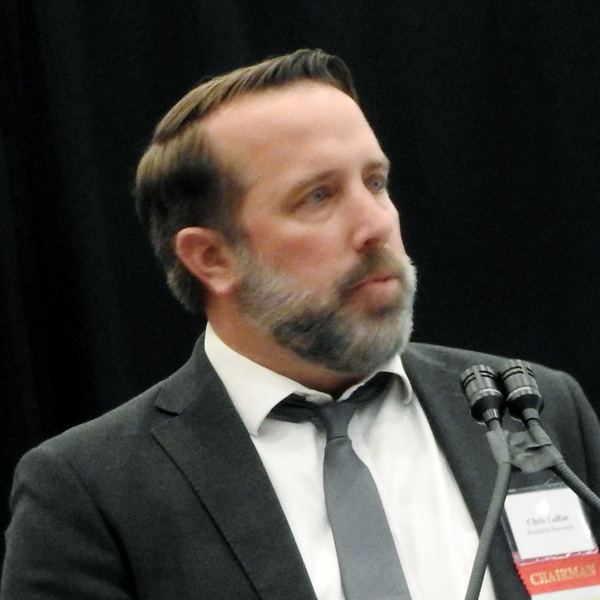 Chris LaRoe, Brookfield Renewable | © RTO Insider LLC
Chris LaRoe, Brookfield Renewable | © RTO Insider LLC
Achieving New York’s climate goals should not come at the cost of “cannibalizing” existing renewable resources, said Chris LaRoe, senior director of regulatory affairs at Brookfield Renewable and chair of the Independent Power Producers of New York (IPPNY).
“We also need to make sure the transmission system is up to the challenge and that we are not bottling public policy resources,” LaRoe said Wednesday at IPPNY’s 36th annual spring conference.
Legislative, Regulatory Update
During the conference, New York Sen. Kevin Parker (D), chair of the Energy and Telecommunications Committee, drew a line from the May 14 mass shooting of Black people in Buffalo to the issue of making energy affordable for all people in the state.
“In this moment you have everyone feeling like they cannot make, not just unrepresented groups, but working class and poor whites across the country, particularly in our great state, feel like there’s no chance for them,” Parker said.
With gas prices headed toward $6/gallon, he added, it’s critical that the energy market “create the kind of economic opportunities such that people are not thinking that they have to murder other folks in order to make their way in this state.”
The pandemic disrupted both lives and livelihoods and created a dynamic in which the state put moratoriums on service cutoffs for overdue utility bills, and now utility arrears total nearly $4 billion in New York just as energy prices are spiking, he said.
Parker said he has to remind his constituents that net-zero emissions means net and that bakeries and restaurants will still be able to use gas-fired ovens for their work.
The benefits of the competitive wholesale electricity market are important, and principally they shield energy consumers from unwarranted risk, said Assemblymember Michael Cusick (D), chair of the Energy Committee.
“Competitive procurement is also an important pathway in meeting the state energy goals and the benefit of this approach is evidenced by the energy storage law (S8384) I created in the legislature along with my good friend and colleague Senator Parker,” Cusick said.
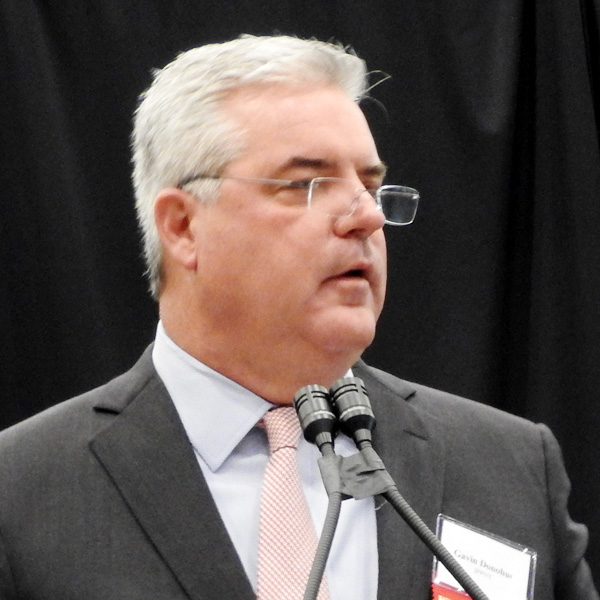 NYPSC Chair Rory Christian | © RTO Insider LLC
NYPSC Chair Rory Christian | © RTO Insider LLC
The electric system won’t be powered entirely by renewable resources and numerous reports highlight that various capabilities are needed to support a grid with significant levels of power generated by intermittent resources, said New York Public Service Commission Chair Rory Christian.
Generation assets are only effective if the transmission line is available to move power, which is why the PSC established a coordinated planning process between utilities and NYISO to align processes and procedures (20-E-0197), he said. (See NY Looks to Improve Tx Headroom Assessments.)
“Working collectively, we can set up a full spectrum of transmission needs, both bulk and local. … In the past, project needs were mainly driven by reliability, whereas today many of these projects will be needed to meet public policy and climate goals,” Christian said.
The commission has so far approved just under 200 local transmission projects, which will allow moving up to 15 GW of renewable energy, but it has approved only two large-scale transmission projects, Christian said. He noted that the PSC last September established a public policy category for transmission and distribution investments to help achieve the state’s environmental goals. (See New York Adopts Groundbreaking Tx Investment Rules.)
Fast Transition
Lawmakers, regulators and agency administrators — together with power producers — are transforming the state in a significant way over what many would say is not an extended period, said New York State Energy Research and Development Authority CEO Doreen Harris, who moderated a panel on offshore wind and energy storage.
“For many people this feels very quick, and certainly how we got here was anything but quick as to the system that we have built together,” Harris said.
 IPPNY CEO Gavin Donohue | © RTO Insider LLC
IPPNY CEO Gavin Donohue | © RTO Insider LLC
IPPNY President and CEO Gavin Donohue said siting was the main challenge for both storage and renewables.
“We have developed 12,800 new megawatts over the last 20 years; we have 6,500 MW of renewable capacity installed in the state; and we’ve closed over 10,500 MW of less efficient facilities,” Donohue said. “Coal has been eliminated in New York state. It’s safe to say that upstate New York is a carbon-free area based on our electricity mix.”
The grid was not designed with points of interconnection on the coast, and because transmission is a long-term planning process, industry and policymakers must keep working on the issue, said Fred Zalcman, executive director of the New York Offshore Wind Alliance.
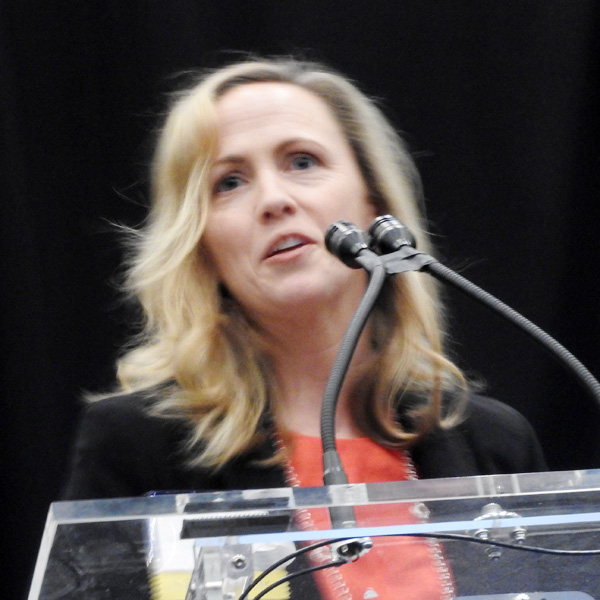 Emilie Nelson, NYISO | © RTO Insider LLC
Emilie Nelson, NYISO | © RTO Insider LLC
“First and foremost, we see that in order to achieve the [Climate Leadership and Community Protection Act’s] expectation that we have 70% renewable energy by 2030, we really need to stay laser-focused on the buildup of infrastructure, be that transmission, be that resources,” NYISO Executive Vice President Emilie Nelson said. “This will be critically important. A lot of times the focus is on some of the intangibles, some of the unknowns.”
Nelson said that the PSC proceeding on integrating 3,000 MW of OSW into Long Island and increasing the transfer capability from Long Island to New York City will help ensure that the buildout can meet the needs of customers in load centers (18-E-0071).
New York has distinct advantages in managing resource adequacy in that NYISO has sole authority, while in California the responsibility is distributed over more entities, CAISO President and CEO Elliot Mainzer told RTO Insider.
Regarding public policy transmission needs, the ISO is between the viability and sufficiency assessment and evaluation, Nelson said.
“We’ve had 19 projects that have submitted proposals into this process and recently had to identify if they will move on, for the 16 projects that are still included, if they’ll continue into the evaluation phase,” she said. “From there we will be evaluating the projects across a set of metrics to identify the more cost-effective and efficient solution.”
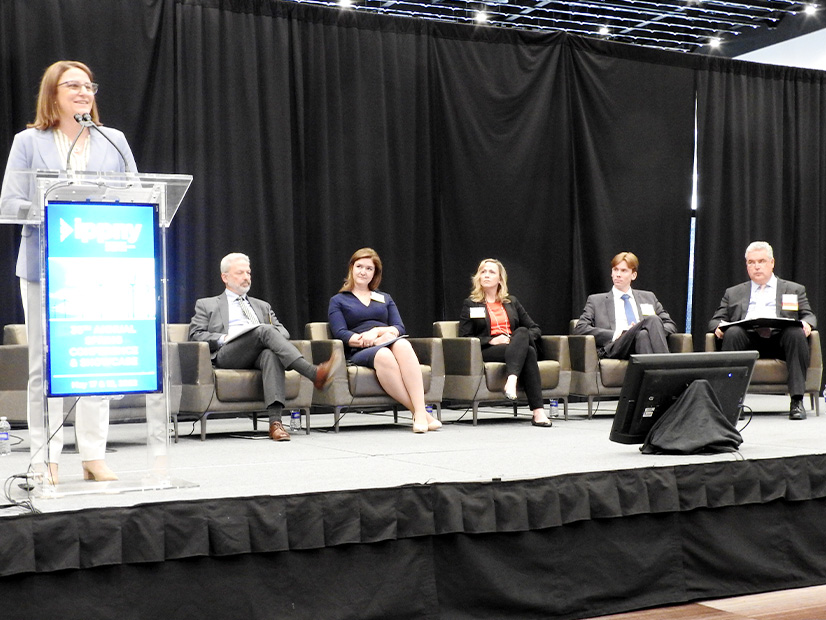 From left: NYSERDA CEO Doreen Harris; Fred Zalcman, NYOWA; Beth Treseder, Equinor; Emilie Nelson, NYISO; Shane Ogren, Macquarie Capital; and IPPNY CEO Gavin Donohue. | © RTO Insider LLC
From left: NYSERDA CEO Doreen Harris; Fred Zalcman, NYOWA; Beth Treseder, Equinor; Emilie Nelson, NYISO; Shane Ogren, Macquarie Capital; and IPPNY CEO Gavin Donohue. | © RTO Insider LLC
The most efficient place to build OSW projects is closer to shore, and as the wind resource is very strong in the northeastern part of the U.S., farther south becomes less economic, especially as you get farther south from New Jersey, said Shane Ogren, vice president for investment banking at Macquarie Capital.
Despite a burgeoning OSW industry in the U.S., “I expect you to see cost declines that will continue to make the investment look better and better over the years,” Ogren said.
Significant global demand for OSW is making the supply chain “very strained,” said Beth Treseder, head of U.S. renewables development for Equinor. “When we talk about domestic investment supply chain, it’s not purely to generate jobs; it’s fundamentally because we need the supply chain to develop the industry effectively in this country.”
